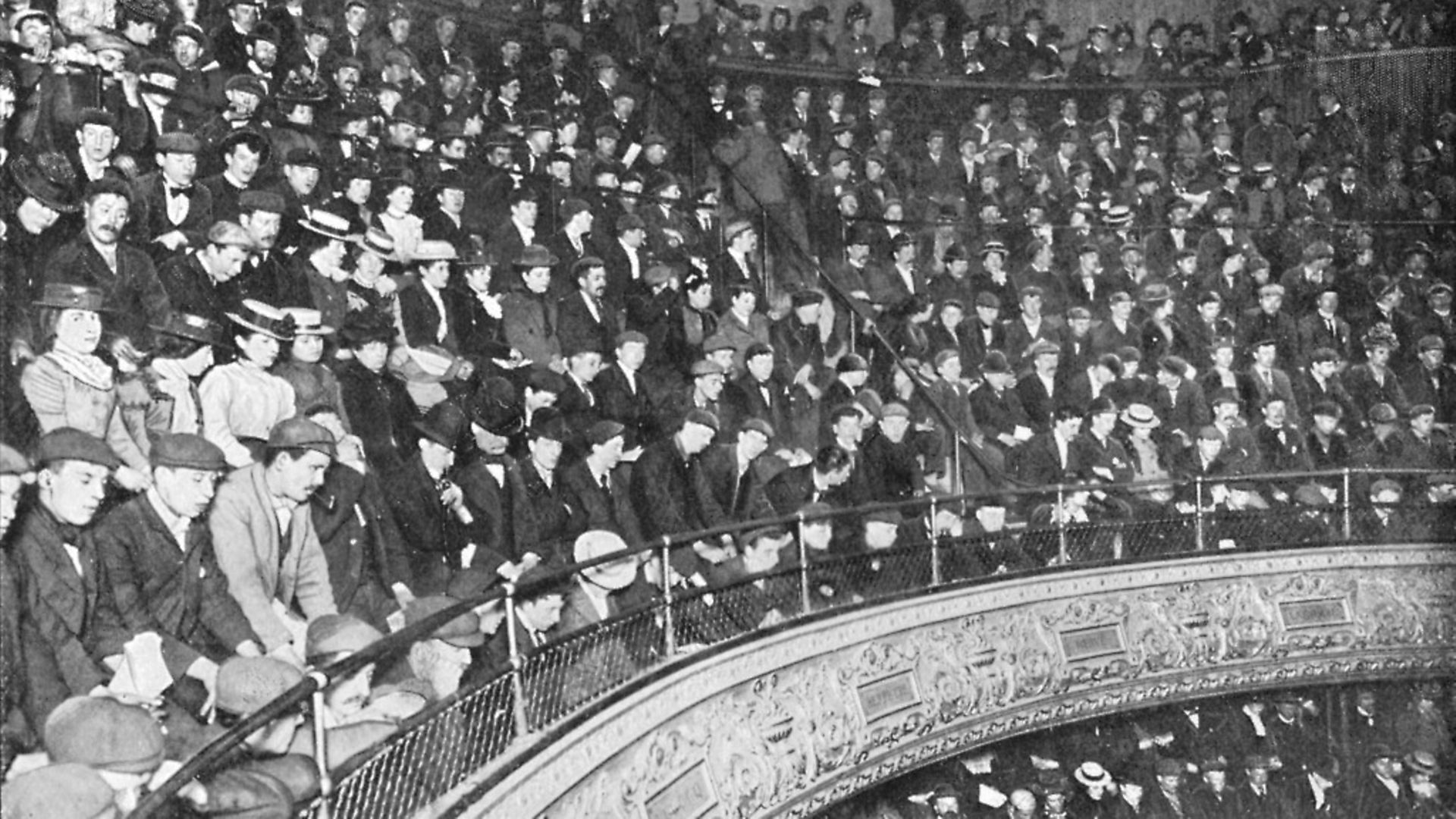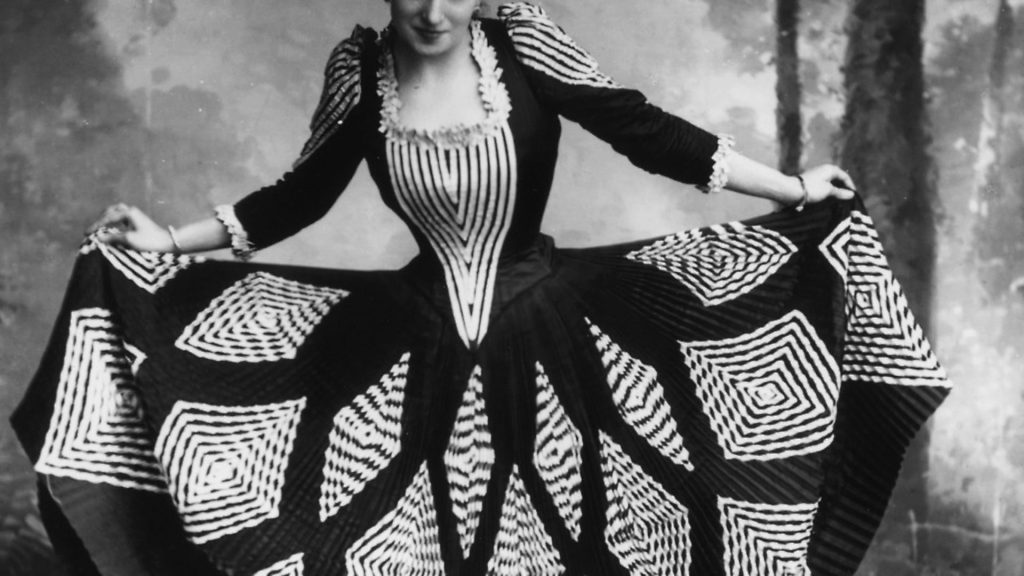
Britain – as ever – focused on the twin fascinations of sex and scandal. And did so with a glorious abundance of fun and frivolity. SOPHIA DEBOICK reports

Wonder and spectacle were the bywords of 1891. In March, the Great Blizzard in the south of England resulted in 15ft snowdrifts that magically transformed the landscape. It was still an age of enchantment, as indicated by the fact that Helena Blavatsky, the founder of the esoteric theosophist movement, and William Robert Woodman, co-founder of the occultist Hermetic Order of the Golden Dawn, of which Aleister Crowley would later become the most famous member, both died yet left still active movements behind them.
The technology unveiled that year carried with it a definite sense of wonderment, from the Tesla coil creating leaping arcs of electrical energy, to Edison’s peephole motion picture device, the Kinetoscope, making images come alive, and the first cross-Channel telephone cable transmitting disembodied voices from the continent.
That spirit of the fantastical was reflected in the literature of the year, as the improbable disguises and elaborate criminal ruses of Arthur Conan Doyle’s Sherlock Holmes stories, serialised in the Strand Magazine, proved wildly popular, William Morris’ slice of utopian science fiction News from Nowhere blended the fantasy of medieval Arthurian romance with Marxist philosophy, and Oscar Wilde’s The Picture of Dorian Gray explored homoeroticism and hedonism through a near-psychedelic central device.
Aubrey Beardsley made art his full-time occupation in this year, his work becoming a byword for the decadent and the subversive. Music, meanwhile, was also going in amazing new directions, as recording technology strained at the leash, while England’s music hall stars were fully reflective of the sobriquet ‘the naughty nineties’ as they pushed the boundaries of acceptability.
While music hardly lived up to stereotypes of the straight-laced Victorians in this year, domestic music technology was still restricted to the piano, but it was the last moment of the pre-recording era.
Edison and Bell had refined sound recording in the immediately preceding decades but a series of legal disputes over patents kept cylinder-playing phonographs off the market until later in the 1890s, and the gramophone record only really gained traction at the beginning of the next century.
For now, it was on stage that hits were made, even if some of the stars of the stage saw their careers last long enough for them to make recordings of their classic hits years after the peak of their popularity. Stepney-born singer and comedian Charles Coborn had made a recording of his signature hit Two Lovely Black Eyes at Edison’s own studio even before the 1890s, making him one of the very earliest recording stars, but in 1891 he made another enduring hit on stage. The Man Who Broke the Bank at Monte Carlo, a prime candidate for hit of the year, saw Coborn swap the tatty attire of his earlier on-stage persona for top hat, tails and a cigar as he sang ‘As I walk along the Bois de Boulogne/ With an independent air/ You can hear the girls declare/ ‘He must be a Millionaire’.’
The song rode the wave of scandal following English confidence trickster Charles Wells cleaning out the Monte Carlo Casino, in Monaco, in the summer of 1891. While Wells ultimately went to prison for a separate fraud and died in obscurity in the 1920s, the long-lived Coborn dined out on the song that Wells had inspired for decades.
He recorded the song in 1904, 1905, 1913 and 1924 and said that he had performed it on stage a quarter of a million times over his career, being able to sing it in 14 languages and performing it with considerable vim in both English and French in the 1934 film Say It With Flowers despite then being 82 years old.
Queen of music hall Marie Lloyd was another on-stage hit-maker, and had already made her name with The Boy I Love is Up in the Gallery, as performed at the Falstaff Music Hall, while also establishing a reputation for innuendo-laced songs, an attitude of knowing innocence and enviable audience rapport. But 1891 was the year she secured superstar status. Augustus Harris had brought lavish, mega-budget pantomimes to the Theatre Royal, Drury Lane, in his role as manager and was quick to recruit Lloyd for a starring role. Appearing as Princess Allfair alongside famed dame Dan Leno in Humpty Dumpty in the 1890-91 pantomime season, beginning on Boxing Day and going on well into February, Lloyd was well-rewarded both in terms of pay, receiving £100 a week, and critical acclaim – the Stage said she brought ‘all her well-known chic and vivacity’ to the show – and she went on to tour the country extensively in the summer to rave audience reactions.
Lloyd’s vivacity was chiefly expressed in her acrobatic tumbles and twirls, and Scottish writer Compton Mackenzie would later recall that, seeing Humpty Dumpty as an eight-year-old, he was ‘greatly surprised that any girl should have the courage to let the world see her drawers as definitely as Marie Lloyd’, as she put on ‘a great display of amber silk petticoats, and long amber silk drawers frilled below her knees’.
This was also the year that Lottie Collins, another bona fide East Ender, and a performer known for her ‘unsparing vigour’, as George Bernard Shaw put it, made Ta-ra-ra Boom-de-ay a hit via her ‘skirt dance’ in Dick Whittington at the Grand, Islington. This also involved much knicker and garter-flashing, with added pep lent by the coy lyrics (‘I’m a blushing bud of innocence’).
The song had originated in American minstrel shows but Collins’ version became so popular that she was soon performing it at up to five London venues a night. It even made it over to can-can crazy Belle Époque Paris, where it was sung by native performers at Aux Ambassadeurs and the Folies Bergère. Ta-ra-ra Boom-de-ay has enjoyed a long life since the 19th century, appearing in films from Disney’s The Aristocats to The Adventures of Priscilla, Queen of The Desert.
In figures like Lloyd and Collins London was proving it could match the French capital for decadent stage antics, and these stars’ off-stage lives could be as dysfunctional as those of Paris’ bohemian hedonists too.
Collins had had a colourful private life until her 1890 marriage to an American theatre manager, which included a court case regarding an assault on her by a married man’s wife and daughter, while early 1892 was marked by Lloyd’s violent husband, Percy Courtenay, being charged at Bow Street with throwing champagne in his wife’s face and threatening her in her dressing room.
Away from the music halls and cabarets of Europe, a forgotten American early recording star would also experience a tumultuous personal life, while also proving himself a born entertainer.
Although details of his life are sketchy, George W. Johnson was certainly the son of former slaves, if not born one himself, and later became a street performer in New York, honing an act based on whistling.
He was perhaps 45 in 1891, the year when he started recording for the pioneering North American Phonograph Company, recording at least once at Thomas Edison’s own laboratory. Singing his songs over and over again as, with no way to duplicate, every recording made by the technology of the day was a master, Johnson proved himself a powerful enough performer to sing as loudly as the shaky technology required and also maintain his stamina.
That power was reflected in his biggest hit. The Laughing Song was published in 1894, although it was around for some time before that, and featured Johnson laughing infectiously along to the music. Charles Penrose would adjust the lyrics to make Johnson’s tune into The Laughing Policeman, which was a hit in 1922 and has been with us every since.
By that time, Johnson had been tried for the murder of his partner Roskin Stuart, who had been found beaten in their apartment, the violent death of a previous live-in girlfriend bringing suspicion down upon Johnson. He was acquitted, but got left behind as the music industry changed and he died in poverty in 1914. He is little recalled despite being probably the first black recording star.
There were some key moments for classical music in 1891. Mahler left his post as director of the Royal Hungarian Opera in Budapest in March, having signed a contract as chief conductor at the Stadttheater Hamburg in January, and gave his first airing of his Totenfeier (‘Funeral Ceremony’) in November.
Tchaikovsky conducted his own Coronation March on the opening night of the Music Hall in New York City (later to become Carnegie Hall) on May 5, conducting his Piano Concerto No. 1 and other pieces on the following days. But such milestones have difficulty living up to the vivid mental images conjured up by the history of the popular stage that year, when laughter, frivolity and spectacle made it a true golden era of entertainment.










